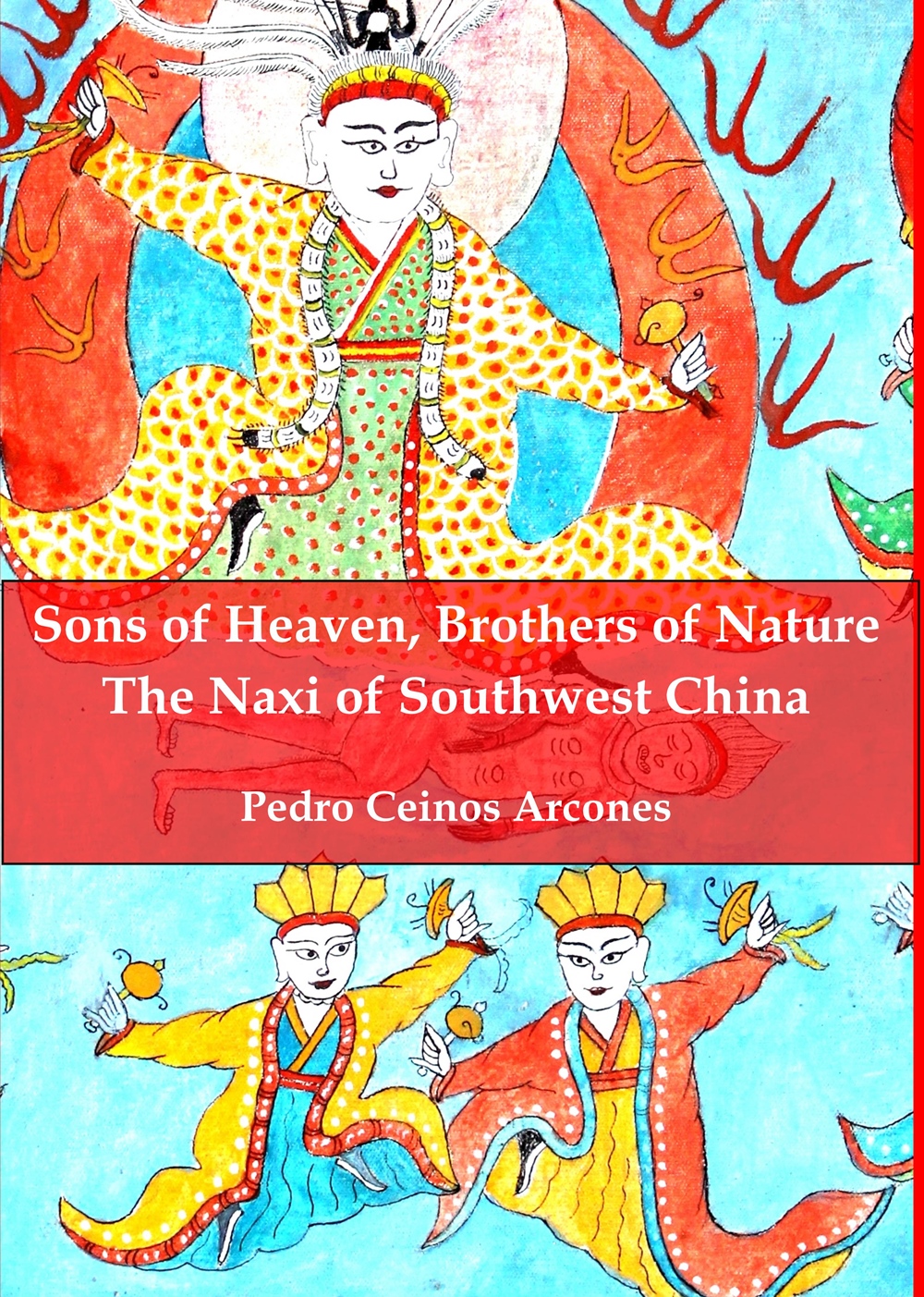
The Naxi is the most interesting ethnic group of China. They have a set of cultural characteristics completely different of those of surrounding peoples. Their pictographic writing, The encyclopedia or archaic wisdom contained in their Dongba classics, their unique religion stressing brotherhood with nature, a life cycle designed to nurture the sacred inside every person, and their special musical, literary and artistic works, all contribute to make the Naxi culture unique among the ethnic groups of our planet
Genre: SOCIAL SCIENCE / Anthropology / CulturalPrivalety published in Yunnan, 1.000 books. Already sold out. Now available as ebook and printing on demand
The Naxi[1] are the most charismatic ethnic group of China; their culture preserves a set of special characteristics that make them one of the more interesting peoples of our planet, including the preservation of the only pictographic script still in use, and the religion associated with it, the development of a philosophy that stresses the respect and conservation of nature, the matrilineal tendencies of their society, and the ability to preserve old cultural traditions already disappeared elsewhere. Anthony Jackson considers that “this peculiar combination of attributes makes them unique, not only among the various ethnic minorities that inhabit southern China, but also in the ethnographic record” (1976: 28).
Population and location
The Naxi ethnic minority has a population of about 280,000[2]. Most of them live in communities in the northwest of Yunnan Province, in Yulong Naxi Autonomous County and Lijiang Old City, the rest being scattered in Weixi, Shangrila[3], Ninglang, Deqin, Yongsheng, Heqing, Jianchuan and Lanping counties in Yunnan Province, Muli County in Sichuan Province and Mangkang County of the Tibet Autonomous Region (Ma Yin: 1989). The distribution of the Naxi people has a half-star shape with the center in the City of Lijiang; it reflects the conquering expeditions of the Naxi kings in their pursue to expand their domains (and the Chinese imperial territory) to the west. So, while the southern and eastern limits of the Naxi occupation have been more or less stable, their western dispersion follows the river valleys to lands as distant as Eya in Muli County, Mangkang County in Tibet, or Yezhi in the Upper Mekong River. This is because Naxi garrisons were deployed in every new territory conquered by their kings to act as guardians of the new border. There they multiplied and build their homes, becoming an outpost of the Naxi culture.
| Language | Status |
|---|---|
|
Spanish
|
Unavailable for translation.
|